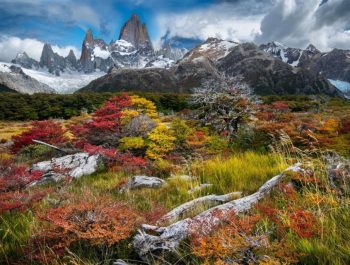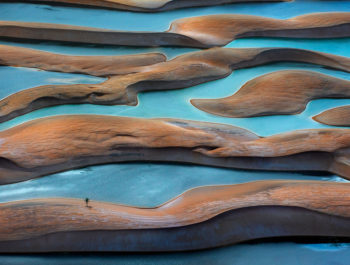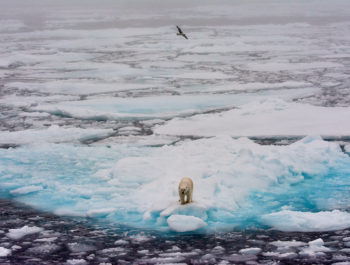Composing a Composite – Cliff Diver
The city of Acapulco, on Mexico’s west coast, has long been a major destination for tourists. Of all its attractions, perhaps the most famous are the cliff divers at La Quebrada (The Creek), adjacent to the Mirador Hotel. All members of the same extended family, the divers swim across the narrow inlet and begin by scaling the face of the 135-ft high cliff, where there is a small shrine at the top at which they may pray before the performance. They have been performing professionally since 1934, so there are countless modern and historic images now available online.
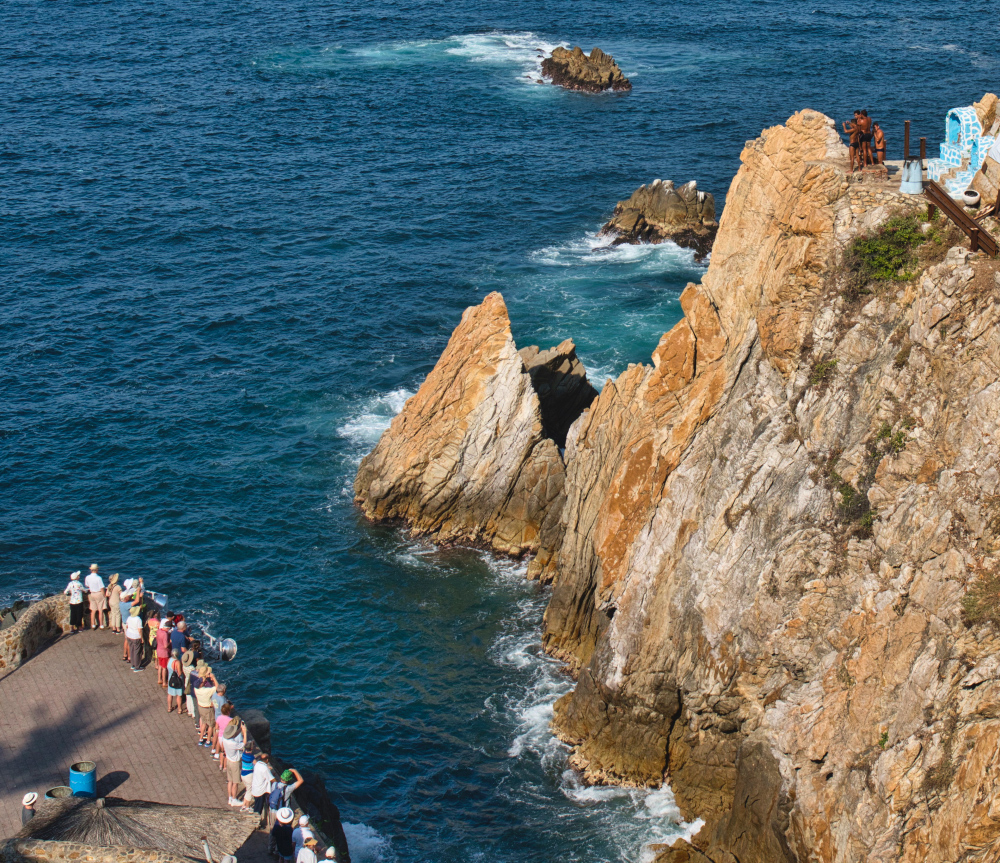
I was there on a bright sunny day in March 2019. I found a perch on a terrace of the hotel where I could rest my Sony a7Riii camera on the railing. My goal was to capture a stream of stop-action images of an entire dive, so I used a 24-105 mm lens set to 105 mm, at f/4.5, 1/3200 sec, and ISO 320. I practiced on several divers who jumped singly or in pairs from various positions on the face of the cliff.
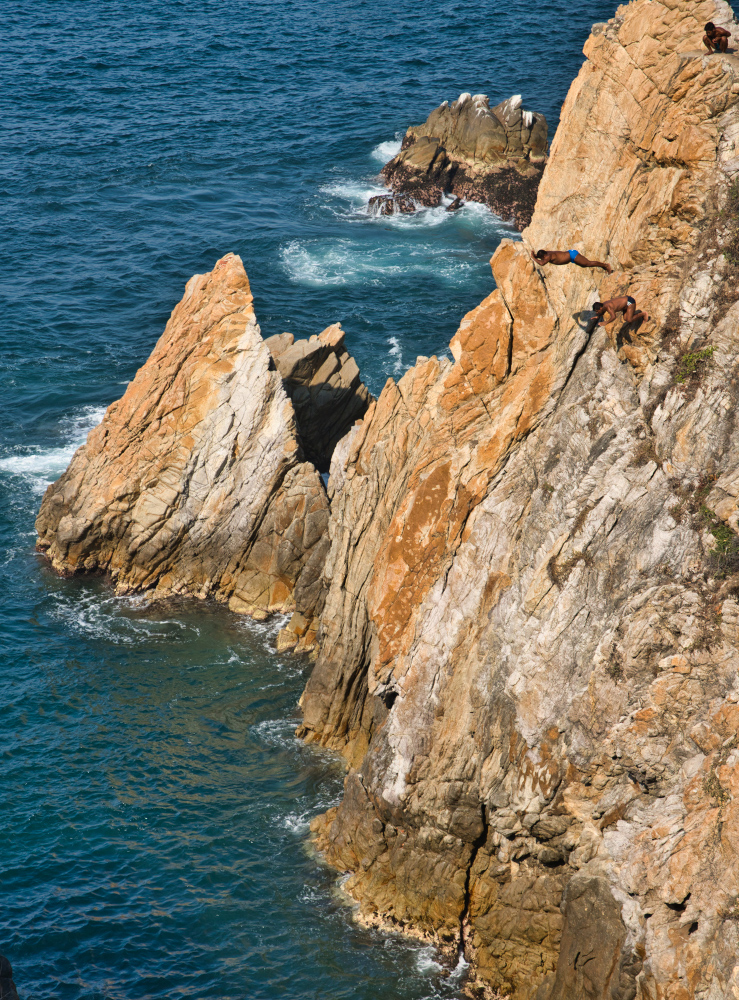
In the end, there was only one diver who jumped from the top of the cliff. Shooting in medium speed burst mode at about 4 frames/sec, I recorded 12 images during the 3-second dive. Fortunately, the diver’s in-air form and entry were perfect, which is a very good thing when he hits the water at about 65 mph. His shadows on the face of the cliff show how close he is to the rocks during the entire dive. We were told that there has never been a fatality during these performances, but there have been broken bones and internal injuries.
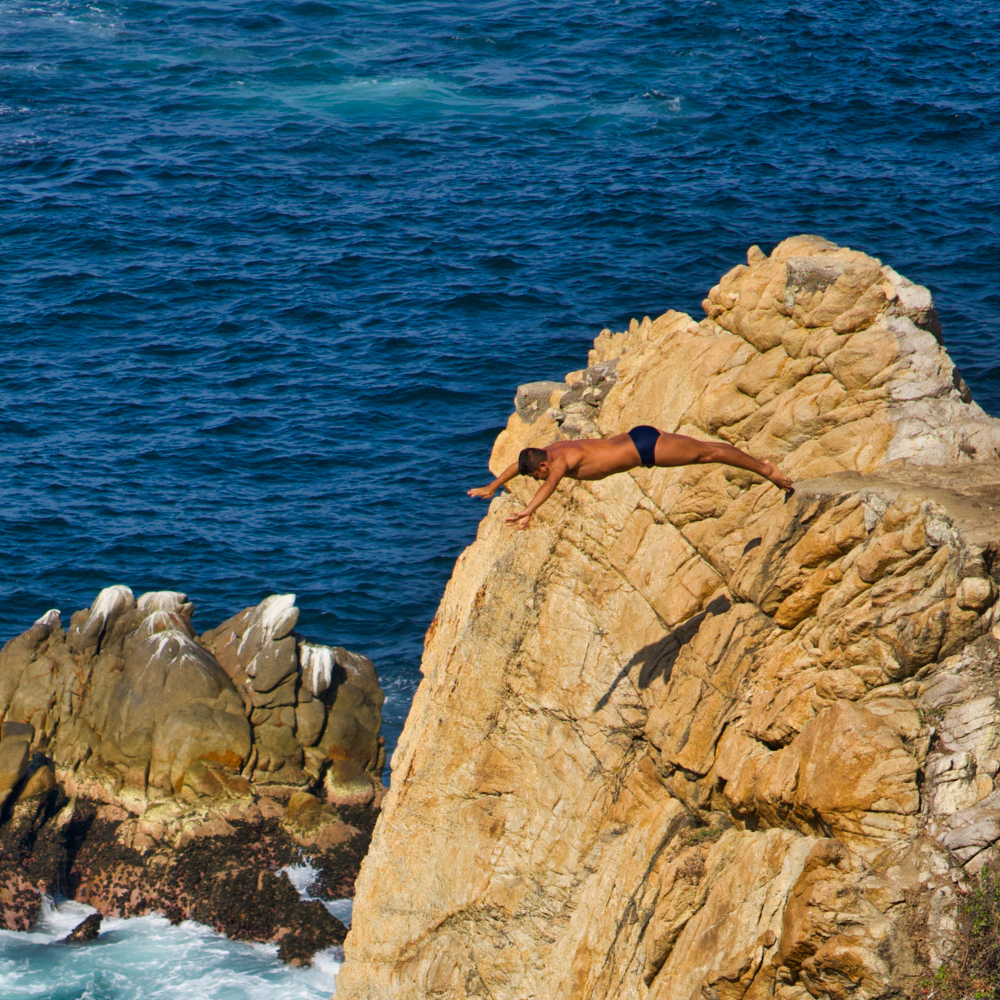
I then had 12 individual photos from which to make a composite image showing the whole dive. Loading the images into Photoshop, I quickly discovered that simply superimposing the images or slices of them wasn’t going to work. I wanted to isolate the motion of the diver, but in fact both the camera and the water were also moving slightly during the 3-second exposure sequence. The only things not moving in all of the images were, of course, the rocks.
The solution was to choose one photo (the 8th one in the sequence) as the base image, then to carefully clip the diver and corresponding shadow from each of the other images and position them precisely over the base image. The key to exact positioning was to clip an easily recognizable piece of rock along with each image of diver and shadow. With 50% transparency in the clipping layer, the rock clipping could be aligned pixel-by-pixel with the same rock in the base image. The final result was exactly the composite I was looking for.
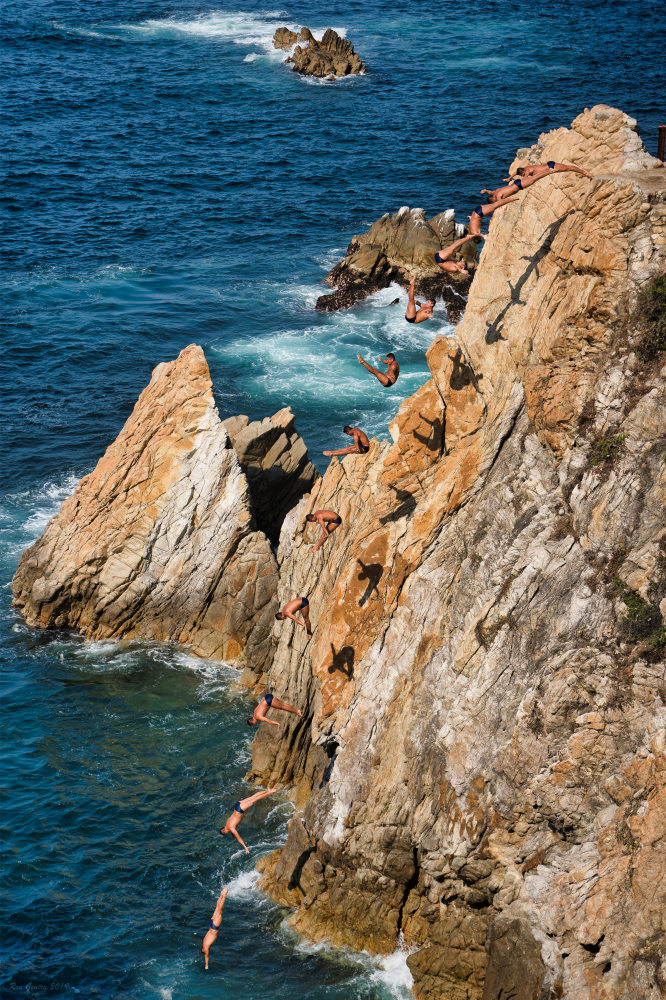
The resolution of the Sony system is good enough to make a 40 x 60 inch print on Chromaluxe aluminum (nwfineartprinting.com), in which the concentration of the diver can be seen in his facial expression.
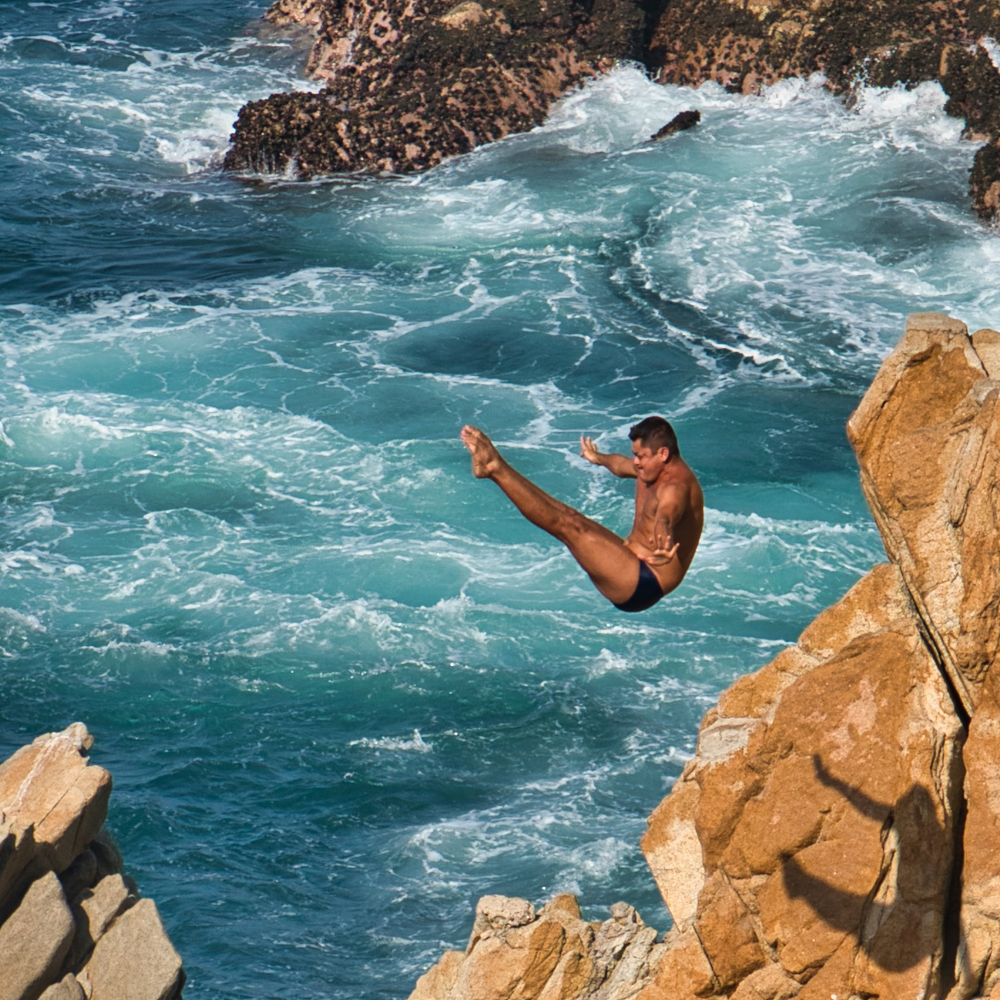
Finally, my wife Caryl, who is a world-famous quilt artist (www.bryerpatch.com), liked this image so much that she had it printed on fabric (www.spoonflower.com) and based a 53 x 68-inch award-winning art quilt on it.
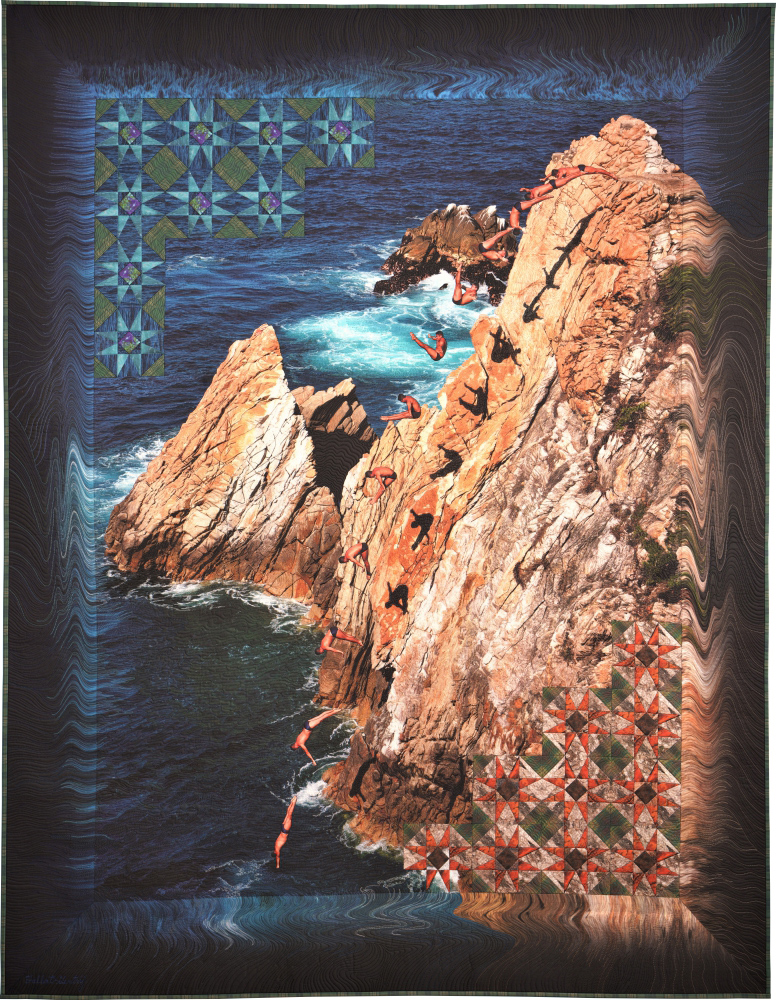
Details of the quilt design and fabrication can be found at http://www.bryerpatch.com/images/quiltrecords/Plunge/Plunge.htm
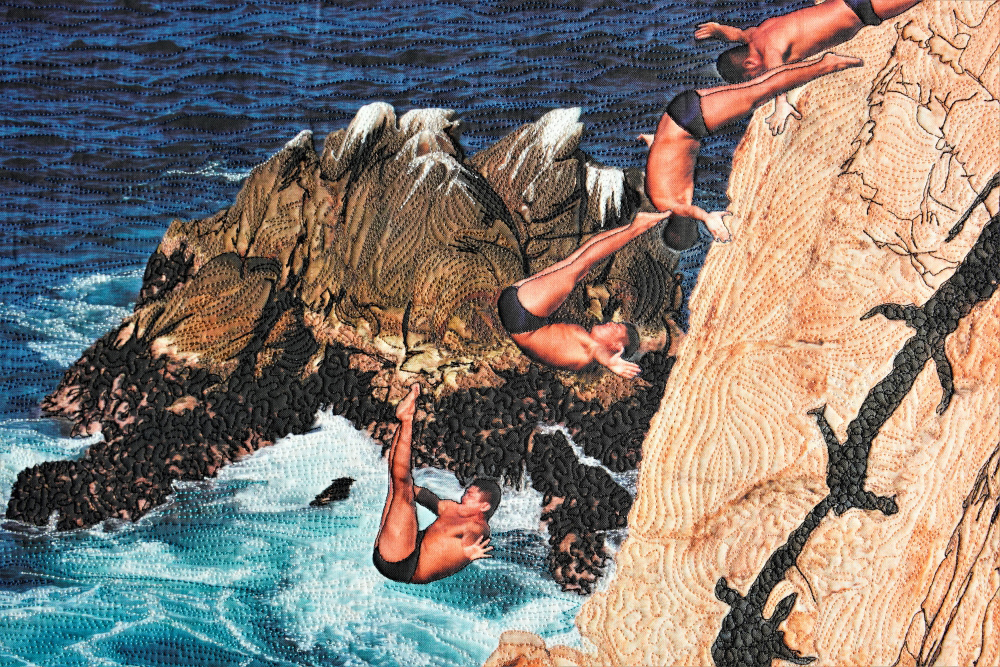
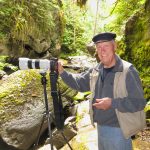
Ron Gentry is a retired professor (Chemistry, University of Minnesota) and now lives in Port Townsend, Washington.
Ron Gentry
February 2020
Port Townsend, Washington
I am a retired professor of chemistry, including 10 years as head of the Department of Chemistry at the University of Minnesota. My interest in photography goes back to the 1960's, but became more serious with the advent of high-quality digital sensors. I am now a Sony devotee, beginning with the RX-1, and progressing through all the a7r models. I most enjoy landscape, seascape and wildlife images, and do a bit of macro work as well.






